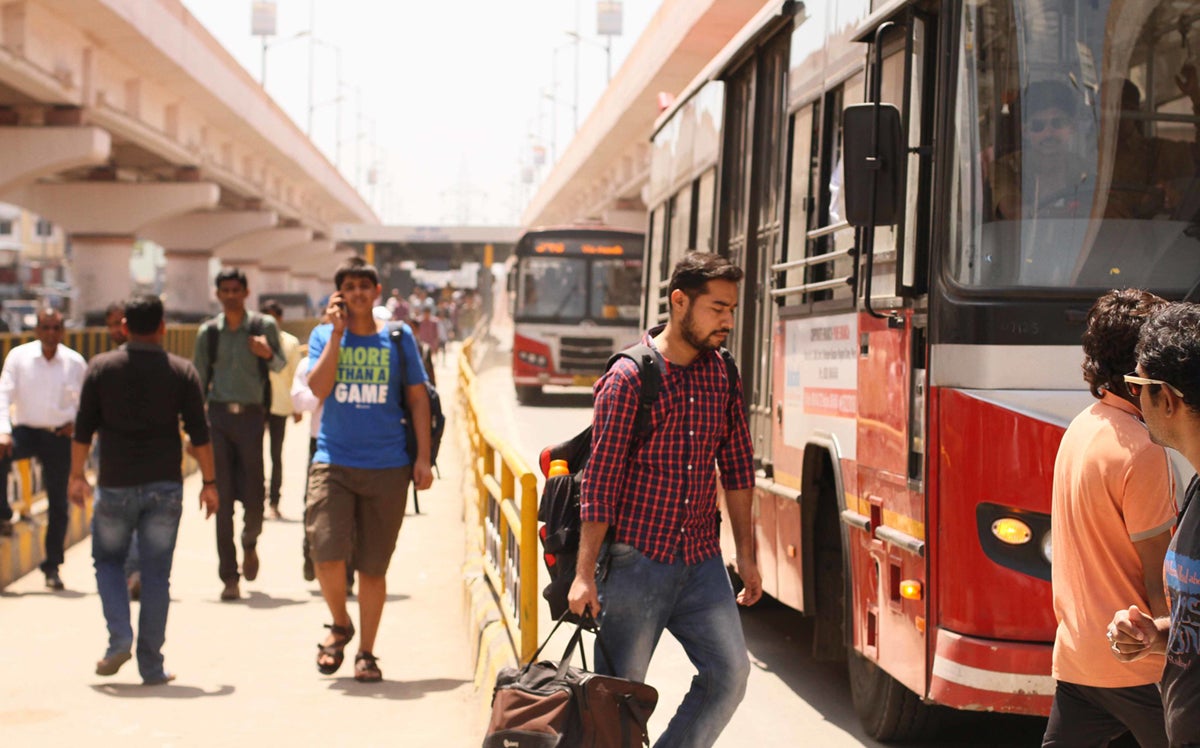
Public transport is a key piece of the sustainable mobility puzzle. As the world continues to urbanize, public transport can help move more people with lower energy consumption per passenger, provides a more affordable alternative for getting around, has a track record of fewer accidents, has significant potential for electrification, reduces congestion, improves air quality, and makes cities more livable and inclusive. Given this vast array of benefits, one would expect buses, trains and ferries to be widely popular among both passengers and policymakers, right? Not always.
Recent studies show that public transport ridership has been declining in many large cities around the world, while, on the other hand, another 1.2 billion cars are predicted to be on the road by 2030. This phenomenon begs a few questions: Why aren’t we seeing more investment and support for public transport? Why has ridership been falling over the years?
Public transport service in large cities is plagued with many challenges: lack of frequent service to suburbs; long waits at transfer points; lack of a viable options to cover the “last mile” between public transport stops and people’s final destination ; insufficient integration with green modes such as cycling; harassment of women in vehicles and at stations; and sometimes a negative perception or attitude towards public transport. This all contributes to a vicious cycle: when fewer people use public transport, there is a decrease in revenue, which leads to either a cut in service or an increase in fares, or both; as a result, fewer people use public transport, which leads to a decrease in revenue, and so on.
So how can we reverse the trend and harness the potential of public transport?
To find out, Sustainable Mobility for All (SuM4All) partners have engaged with public transport authorities and operators from 20 cities across Europe, Asia and North America. Spanning over 18 months, this exercise culminated in a high-level panel discussion at the World Bank Group Spring meetings, and also drew on the Dakar Dialogue led by the International Public Transport Association (UITP).
SuM4All conducted similar consultations with the private sector—as described by Program Manager Nancy Vandycke in a recent blog post—and with other key transport stakeholders. The objective? To inform and enrich the design of SuM4All’s forthcoming flagship study, the Global Roadmap of Action Toward Sustainable Mobility (GRA).
This new report includes a menu of over 180 concrete policy measures that can transform the future of mobility by making transport safer, greener, more efficient, and equitable. Most importantly, the GRA also comes with an interactive online tool designed to help decision-makers identify and combine the interventions that are most relevant to their local circumstances.
As part of this, the GRA features a number of measures intended to enhance the performance and attractiveness of public transport. Some of these policies, for instance, are meant to facilitate the physical integration of buses and metros with new mobility solutions such as ridesharing platforms and bikeshare systems. Others aim to improve the quality and safety of public transport for women or vulnerable groups. More broadly, the report also proposes solutions for expanding public transport infrastructure to optimal levels.
None of this work would have been possible without the wealth of input and perspectives we gathered from stakeholders across the transport sector. Thanks to their active participation, the GRA has evolved into an action-oriented product shaped by real-life experience and practical thinking. We can’t wait to share this new tool with you, and invite you to follow the launch of the GRA live on October 23rd. Join us!



Join the Conversation